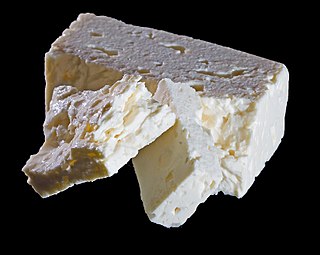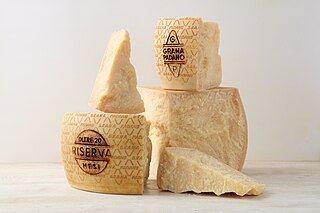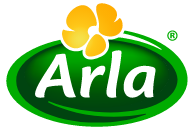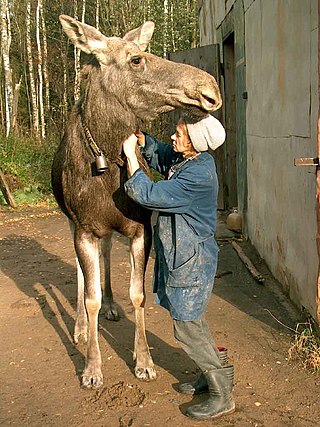| Pule | |
|---|---|
| Country of origin | Serbia |
| Town | Sremska Mitrovica, at the Zasavica Special Nature Reserve |
| Source of milk | Donkeys and goats |
Pule cheese or magareći sir, is a Serbian cheese made from 60% Balkan donkey milk and 40% goat's milk. [1] [2]
The cheese is produced in Zasavica Nature Reserve.
Pule is reportedly the "world's most expensive cheese", fetching US$1300 per kilogram. [3] [4] [5] It is so expensive because of its difficulty to produce, and its rarity: there are only about 100 jennies in the landrace of Balkan donkeys that are milked for Pule-making and it takes 25 litres (6+1⁄2 US gal) of milk to create one kilogram (2 lb 3 oz) of cheese. [3] Among its devoted enthusiasts is Novak Djokovic, who was once rumoured to have purchased the entire supply, although he denied it. [6]
The taste of Pule cheese is reputed to be similar to that of manchego, a combination of nutty and earthy flavours, accompanied by a crumbly texture. [6]

Dairy products or milk products, also known as lacticinia, are food products made from milk. The most common dairy animals are cow, water buffalo, nanny goat, and ewe. Dairy products include common grocery store food around the world such as yogurt, cheese, milk and butter. A facility that produces dairy products is a dairy. Dairy products are consumed worldwide to varying degrees. Some people avoid some or all dairy products because of lactose intolerance, veganism, environmental concerns, other health reasons or beliefs.

Milk is a white liquid food produced by the mammary glands of mammals. It is the primary source of nutrition for young mammals before they are able to digest solid food. Milk contains many nutrients, including calcium and protein, as well as lactose and saturated fat. Immune factors and immune-modulating components in milk contribute to milk immunity. Early-lactation milk, which is called colostrum, contains antibodies and immune-modulating components that strengthen the immune system against many diseases. The US CDC agency recommends that children over the age of 12 months should have two servings of dairy (milk) products a day, and more than six billion people worldwide consume milk and milk products.

Rennet is a complex set of enzymes produced in the stomachs of ruminant mammals. Chymosin, its key component, is a protease enzyme that curdles the casein in milk. In addition to chymosin, rennet contains other enzymes, such as pepsin and a lipase.

Roquefort is a sheep milk blue cheese from southern France. Though similar cheeses are produced elsewhere, EU law dictates that only those cheeses aged in the natural Combalou caves of Roquefort-sur-Soulzon may bear the name Roquefort, as it is a recognised geographical indication, and has a protected designation of origin.

Feta is a Greek brined white cheese made from sheep milk or from a mixture of sheep and goat milk. It is soft, with small or no holes, and no skin. Crumbly with a slightly grainy texture, it is formed into large blocks and aged in brine. Its flavor is tangy and salty, ranging from mild to sharp. Feta is used as a table cheese, in salads such as Greek salad, and in pastries, notably the phyllo-based Greek dishes spanakopita "spinach pie" and tyropita "cheese pie". It is often served with olive oil or olives, and sprinkled with aromatic herbs such as oregano. It can also be served cooked, as part of a sandwich, in omelettes, and many other dishes.

Goat cheese, goat's cheese or chèvre is cheese made from goat's milk. Goats were among the first animals to be domesticated for producing food. Goat cheese is made around the world with a variety of recipes, giving many different styles of cheeses, from fresh and soft to aged and hard.
Serbian cuisine is a Balkan cuisine that consists of the culinary methods and traditions of Serbia. Its roots lie in Serbian history, including centuries of cultural contact and influence with the Greeks and the Byzantine Empire, the Ottomans, and Serbia's Balkan neighbours, especially during the existence of Yugoslavia. Historically, Serbian food develops from pastoral customs that involved the keeping of sheep in mountain highlands, in a climate and regional context that favoured animal husbandry over vegetable farming; Serbian food is therefore traditionally richer in animal products and basic grains—corn, wheat and oats—than fresh vegetable dishes. Following the abandonment of widely practiced pastoral lifestyles, Serbian food emerged through the Middle Ages heavily dependent not on lamb or mutton, but on the keeping of pigs for the annual cull and the production of various cured meats, such as sausages, bacon and ham products.

Government cheese is processed cheese provided to welfare beneficiaries, Food Stamp recipients, and the elderly receiving Social Security in the United States, as well as to food banks and churches. This processed cheese was used in military kitchens during World War II and has been used in schools since the 1950s.

Grana Padano is a cheese originating in the Po Valley, in northern Italy. It is similar to Parmesan but with less strict regulations governing its production. This hard, crumbly-textured cheese is made with unpasteurized cows' milk that is semi-skimmed. To preserve the authenticity of the manufacturing processes and raw materials used to make this cheese, Grana Padano was registered as a denominazione di origine controllata (DOC) in 1955, and as a European Union protected designation of origin (PDO) in 1996. Outside of the EU, its name is protected in several other countries based on the Lisbon Agreement and bilateral agreements.

Arla Foods Ltd. is a major dairy products company in the United Kingdom, based in Leeds, and a subsidiary of Arla Foods, which is owned by its farmer owners in seven countries including the UK.

The Zasavica is a bog in the region of Mačva, west central Serbia. It is a major wildlife refuge and one of the last authentically preserved wetlands in Serbia. In the 2000s it became a popular attraction with the successful reintroduction of beavers, which had become extinct on the same land areas 100 years before.

Cheese is a type of dairy product produced in a range of flavors, textures, and forms by coagulation of the milk protein casein. It comprises proteins and fat from milk. During production, milk is usually acidified and either the enzymes of rennet or bacterial enzymes with similar activity are added to cause the casein to coagulate. The solid curds are then separated from the liquid whey and pressed into finished cheese. Some cheeses have aromatic molds on the rind, the outer layer, or throughout.

Moose milk, also known as elk milk, refers to milk produced by moose. Though it is most commonly consumed by moose calves, its production has also been commercialised in Russia and Sweden.
Food history is an interdisciplinary field that examines the history and the cultural, economic, environmental, and sociological impacts of food and human nutrition. It is considered distinct from the more traditional field of culinary history, which focuses on the origin and recreation of specific recipes.

Gossner Foods is one of the largest Swiss cheese manufacturers in the United States, and is based in Logan, Utah.

The Balkan donkey or mountain donkey, Serbian: Domaći balkanski magarac, is a breed or group of breeds of domestic donkey originating in the Balkan region. It is reported from Serbia and Montenegro.
Moose cheese is cheese made from moose milk. Varieties of moose cheese are produced in Sweden by Christer and Ulla Johansson at their location called "Moose House" or "Elk House". Three varieties of moose cheese are produced.

Pig milk is typically consumed by piglets. It is similar in composition to cow's milk, though higher in fat and more watery. Pig milk is seldom obtained for human uses and is not considered to be a viable agricultural product. Several attempts have been made to produce pig milk cheese, some of which have been successful.

There are several regional types of Serbian cheeses, such as the Sjenica, Zlatar, Svrljig and Homolje cheeses. The Pule cheese has gained much notoriety since 2000s as it became the most expensive cheese in the world.